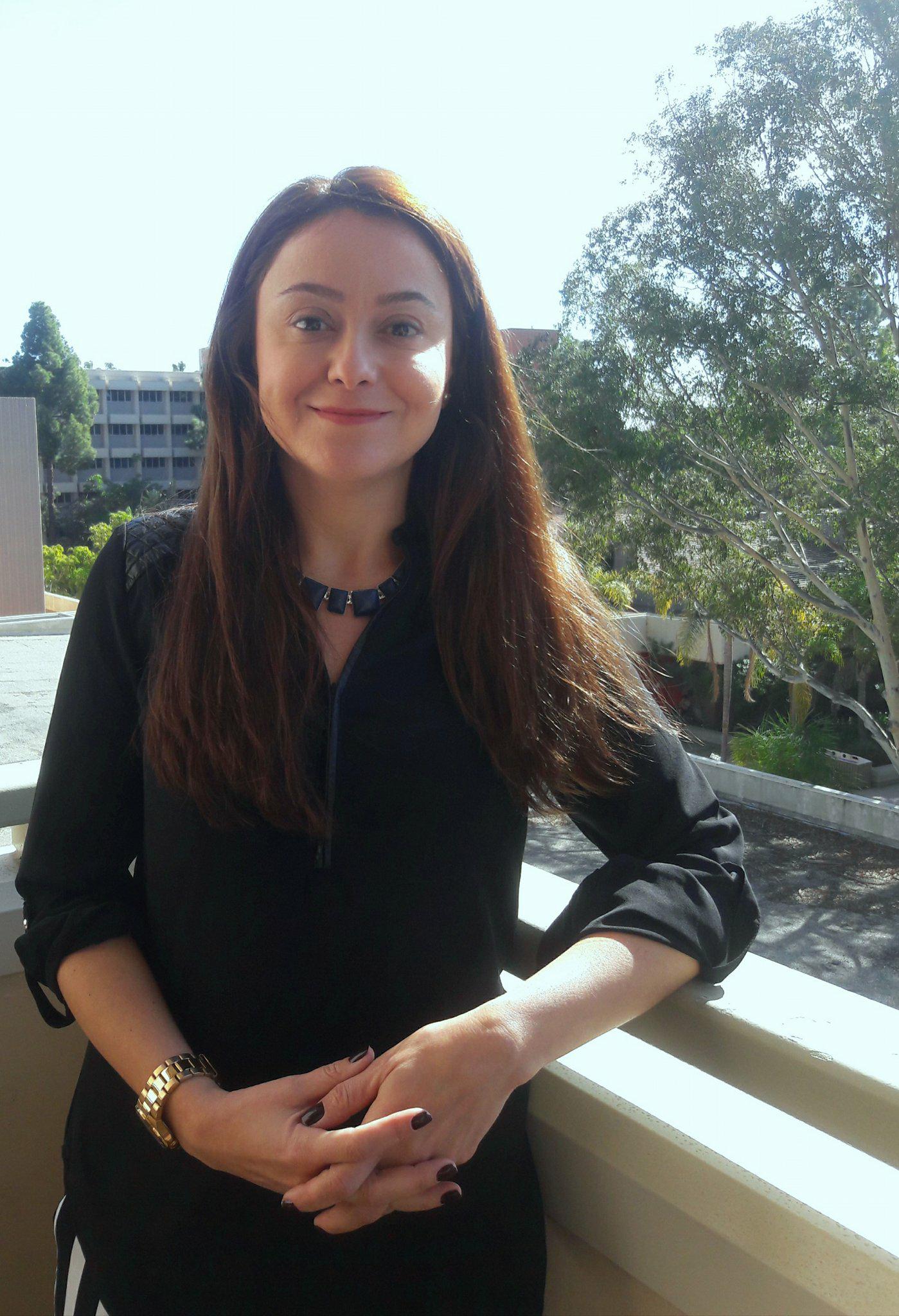A Window on Translation: Aline Ferreira’s Language Lab
By Sierrah DeBoer
Aline Ferreira, an assistant professor in the department of Spanish and Portuguese, is currently directing high-tech eye tracking equipment in UCSB’s Bilingualism, Translation, and Cognition Laboratory to observe the brain as it translates from a speaker or typist’s mother tongue to a second language and back again.
Ferreira is accessing a window to the brain: the eye.
In these experiments, she and her graduate student researchers will be able to see what parts of the brain are active and when, during the translation of Spanish, Portuguese, and English.
Formerly a language and translation professor at several Canadian universities, Ferreira now teaches courses on Hispanic linguistics, bilingualism and social linguistics, as well as a graduate seminar in translation and cognition, alongside her research.
She values engaging her students in a hands-on learning environment and hopes to get them involved in community work in the spheres of education, courts, hospitals, and documentary interpretation.
Ferreira expects her research will strengthen language teaching and the role of interpretation in our increasingly diverse world. She spoke about her research and its implications in a recent interview. The interview has been edited for length.
Q: What do you do with the Bilingualism, Translation, and Cognitive Laboratory’s eye-tracker? How does this information inform your understanding of the translation process?
A: We just started this lab. I will be starting data collection this month, now February, which we would be collecting data from professional translators translating from their first language into their second language, and from their second language into their first language.
I will be analyzing the process of decision making when they are translating, tracking the eye movement to analyze cognitive effort and the typing when they are translating, to try to understand the relation between reading and typing at the same time, processing both languages. We are also using the lab for my graduate seminar, “Translation and Cognition” in which my students are going to have their first contact with the eye tracker. They will have this experience with translation research, so I try to get students involved in the lab.
Q: Do you see an increase in demand for translators and language teachers as the United States and Canada grow more diverse?
A: Yes. Now there is an increase in the number of core and medical interpreters in the Santa Maria area just because the number of speakers keeps growing here. So, the second generation is fully bilingual or at least monolinguals of English because sometimes they just don’t want to speak the family language. More Latinos are arriving every day in this country, but there is a need for interpreters not only here in California but around the world.
Q: Where do you see your research taking you in the future? Is there a specific goal you are trying to achieve?
A: I like to get involved in the community in the interpreting programs in which our students could help our community with services, such as hospital interpreting, court interpreting, and documentation and also helping bilingual children in schools in case their levels of English are not yet developed. Also improving the way that we can understand translation and interpreting here, and how we can be trained to become competent translators and interpreters.
Sierrah DeBoer is a Senior at UC Santa Barbara, majoring in English.


